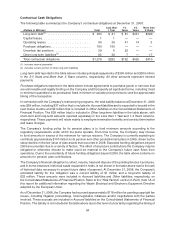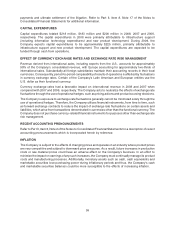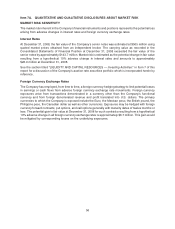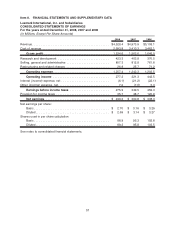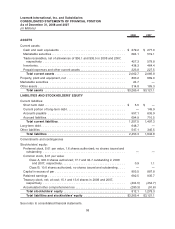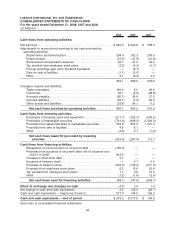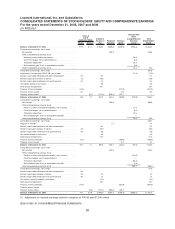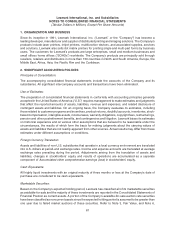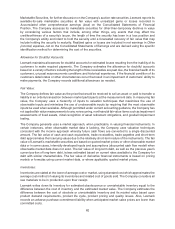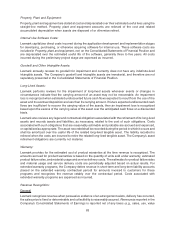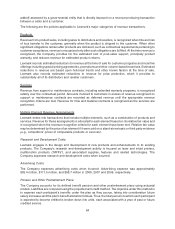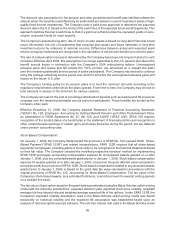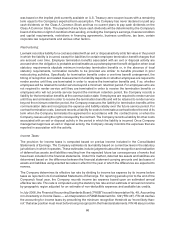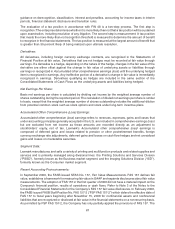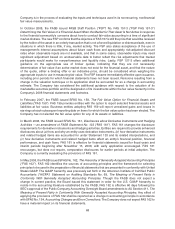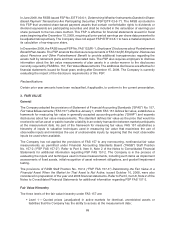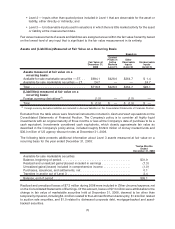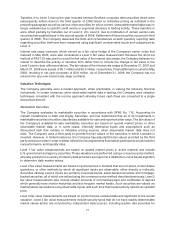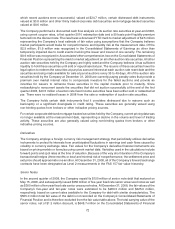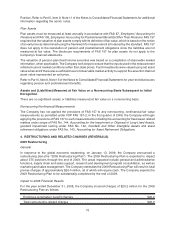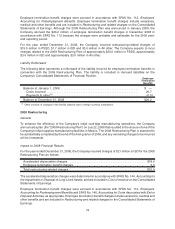Lexmark 2008 Annual Report Download - page 70
Download and view the complete annual report
Please find page 70 of the 2008 Lexmark annual report below. You can navigate through the pages in the report by either clicking on the pages listed below, or by using the keyword search tool below to find specific information within the annual report.
added) assessed by a governmental entity that is directly imposed on a revenue-producing transaction
between a seller and a customer.
The following are the policies applicable to Lexmark’s major categories of revenue transactions:
Products
Revenue from product sales, including sales to distributors and resellers, is recognized when title and risk
of loss transfer to the customer, generally when the product is shipped to the customer. When other
significant obligations remain after products are delivered, such as contractual requirements pertaining to
customer acceptance, revenue is recognized only after such obligations are fulfilled. At the time revenue is
recognized, the Company provides for the estimated cost of post-sales support, principally product
warranty, and reduces revenue for estimated product returns.
Lexmark records estimated reductions to revenue at the time of sale for customer programs and incentive
offerings including special pricing agreements, promotions and other volume-based incentives. Estimated
reductions in revenue are based upon historical trends and other known factors at the time of sale.
Lexmark also records estimated reductions to revenue for price protection, which it provides to
substantially all of its distributors and reseller customers.
Services
Revenue from support or maintenance contracts, including extended warranty programs, is recognized
ratably over the contractual period. Amounts invoiced to customers in excess of revenue recognized on
support or maintenance contracts are recorded as deferred revenue until the appropriate revenue
recognition criteria are met. Revenue for time and material contracts is recognized as the services are
performed.
Multiple Element Revenue Arrangements
Lexmark enters into transactions that include multiple elements, such as a combination of products and
services. Revenue for these arrangements is allocated to each element based on its relative fair value and
is recognized when the revenue recognition criteria for each element have been met. Relative fair value
may be determined by the price of an element if it were sold on a stand-alone basis or third party evidence
(e.g., competitors’ prices of comparable products or services).
Research and Development Costs:
Lexmark engages in the design and development of new products and enhancements to its existing
products. The Company’s research and development activity is focused on laser and inkjet printers,
multifunction products (“MFPs”), and associated supplies, features and related technologies. The
Company expenses research and development costs when incurred.
Advertising Costs:
The Company expenses advertising costs when incurred. Advertising expense was approximately
$93.4 million, $111.5 million, and $98.7 million in 2008, 2007 and 2006, respectively.
Pension and Other Postretirement Plans:
The Company accounts for its defined benefit pension and other postretirement plans using actuarial
models. Liabilities are computed using the projected unit credit method. The objective under this method is
to expense each participant’s benefits under the plan as they accrue, taking into consideration future
salary increases and the plan’s benefit allocation formula. Thus, the total pension to which each participant
is expected to become entitled is broken down into units, each associated with a year of past or future
credited service.
64


